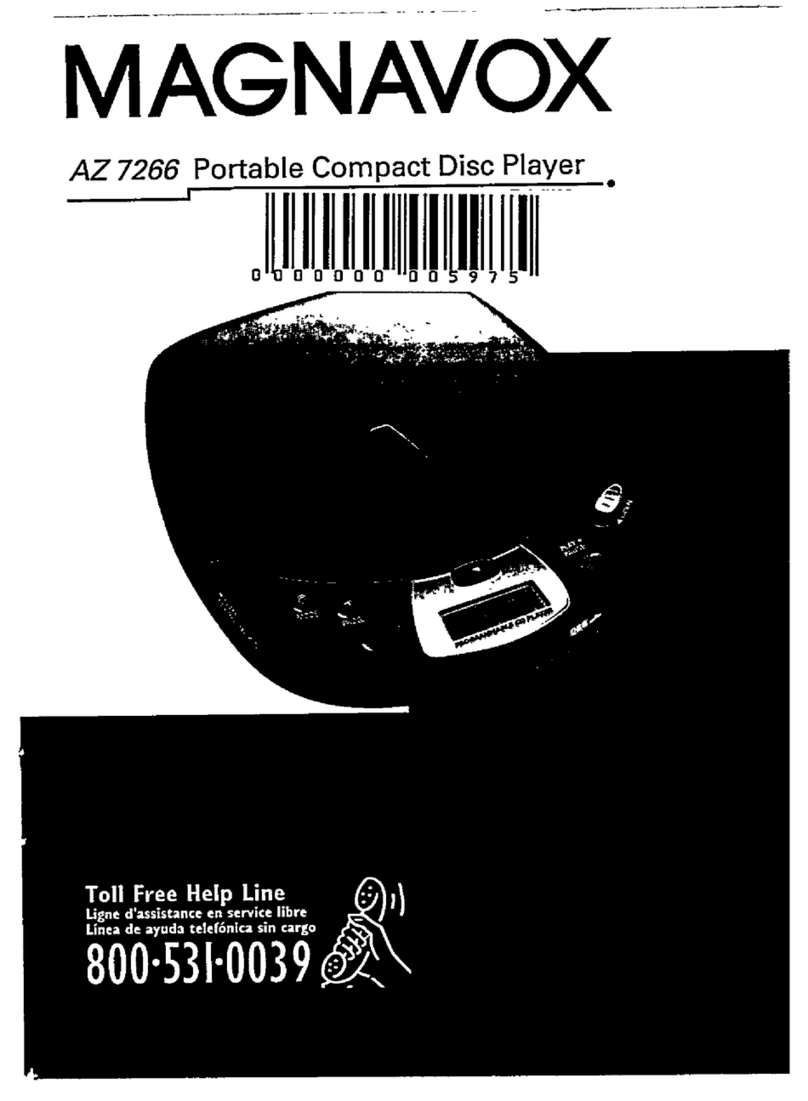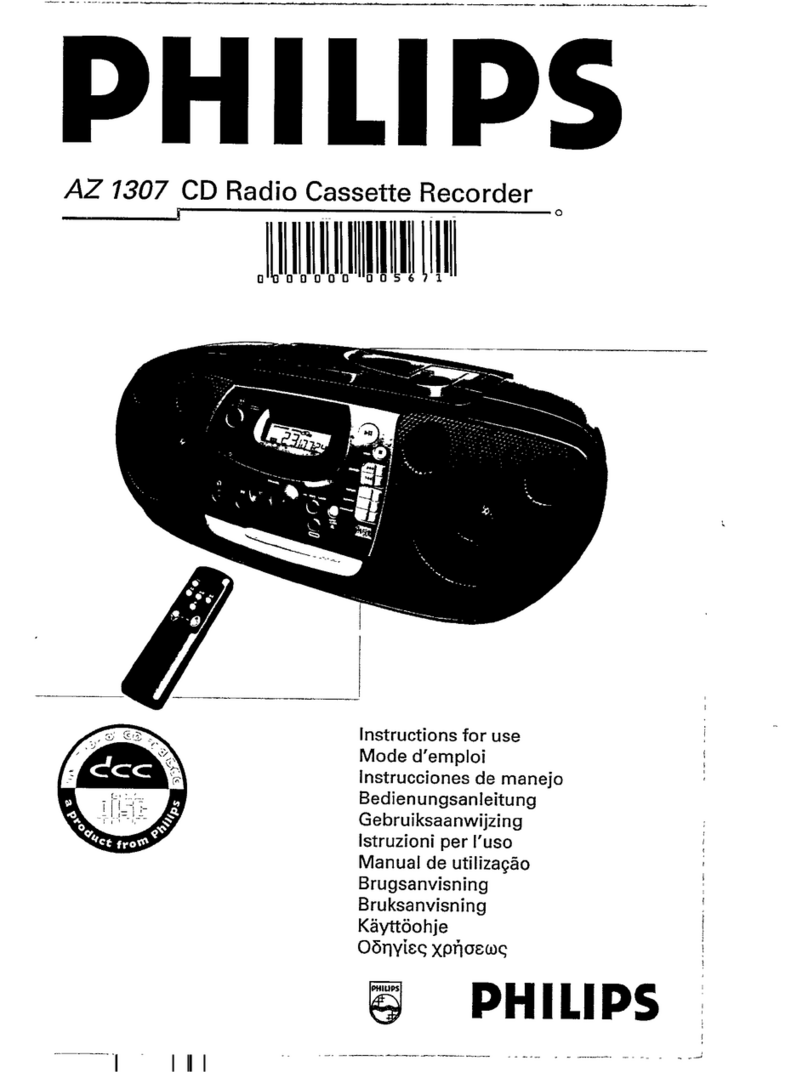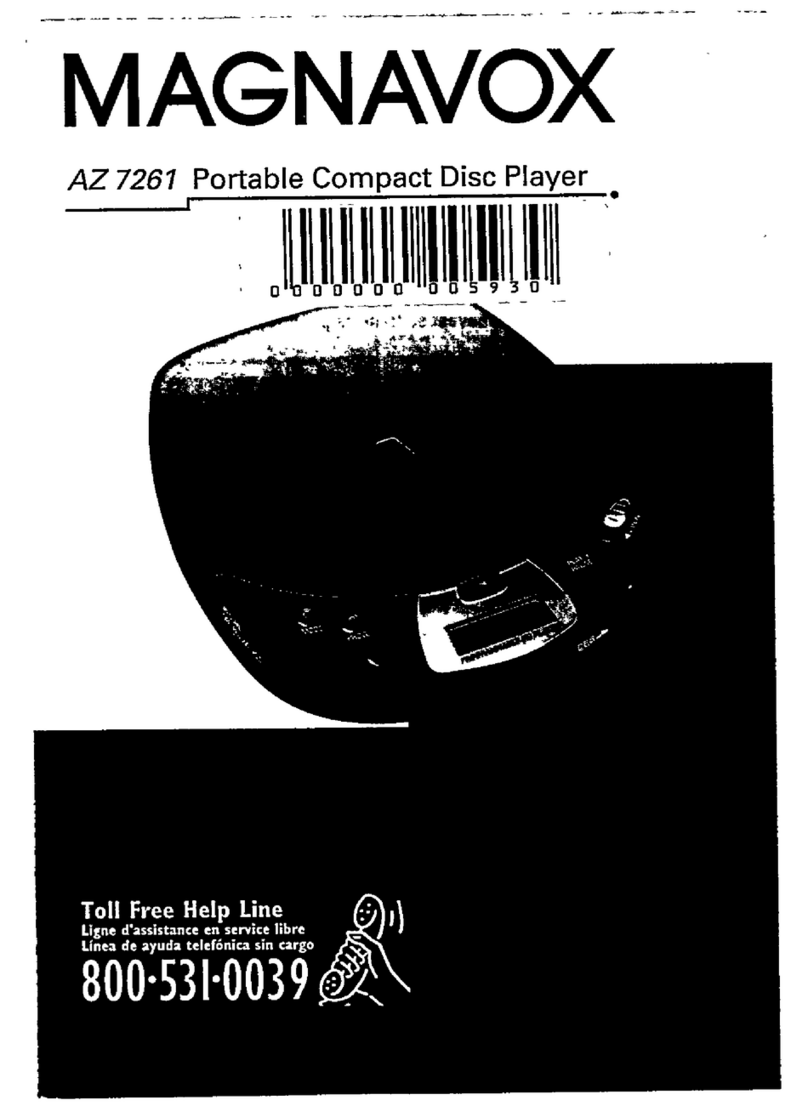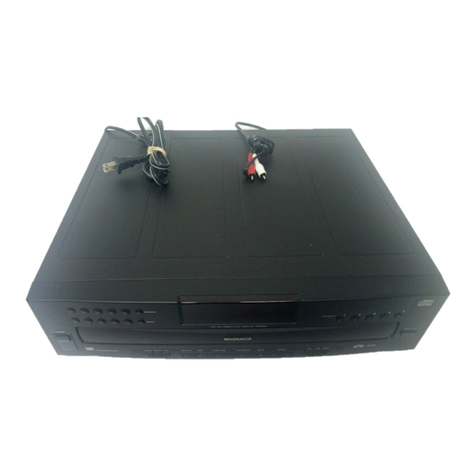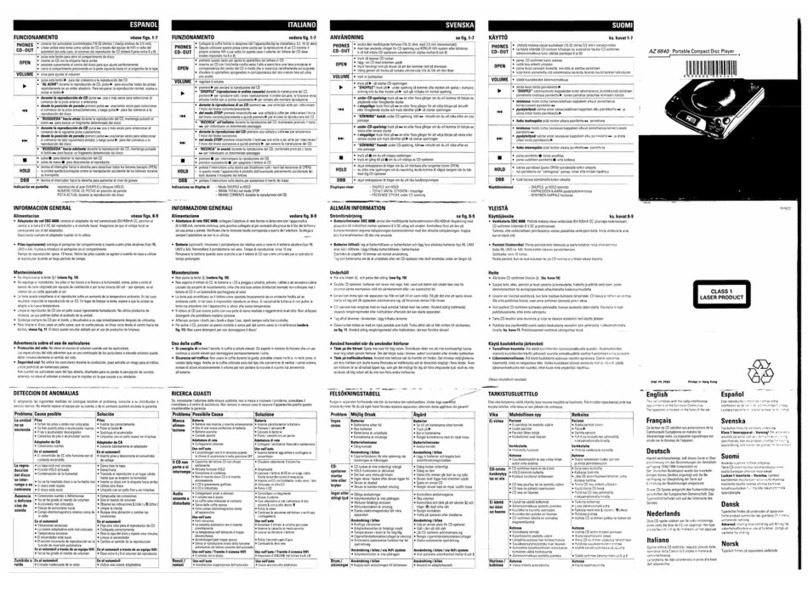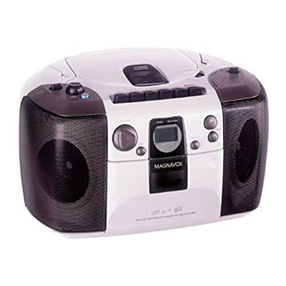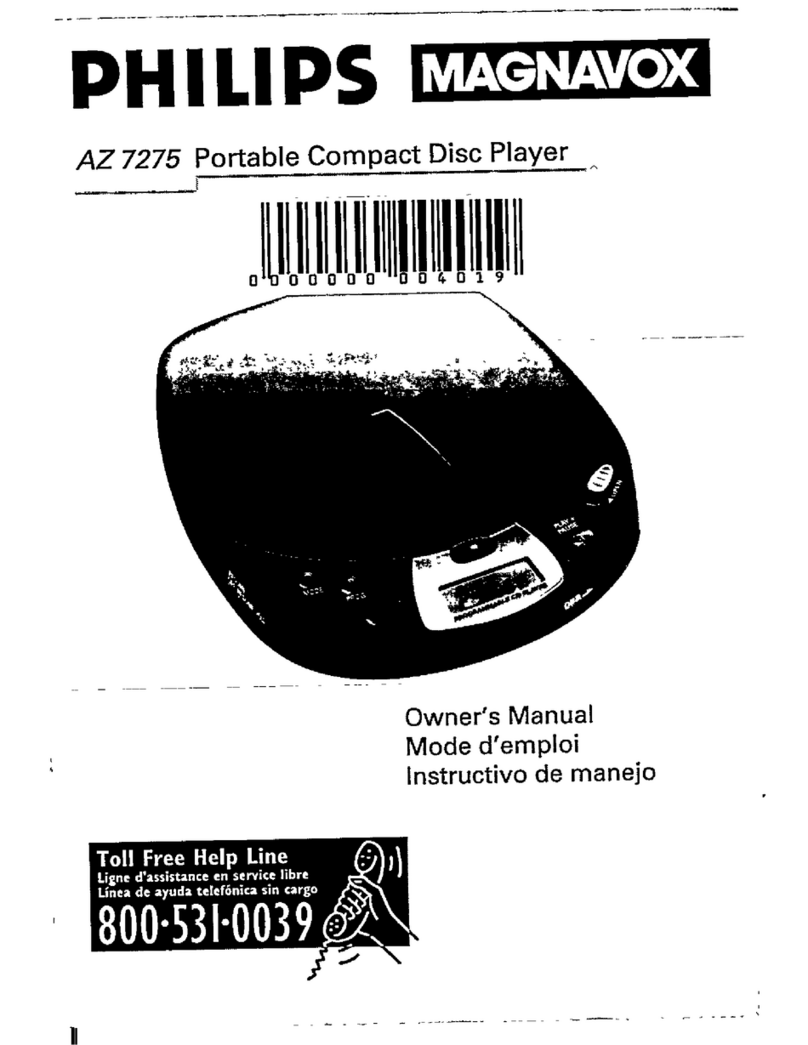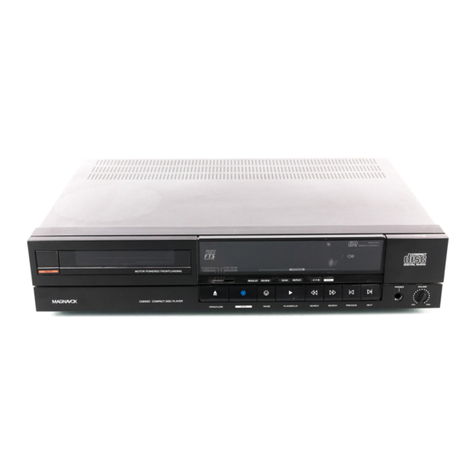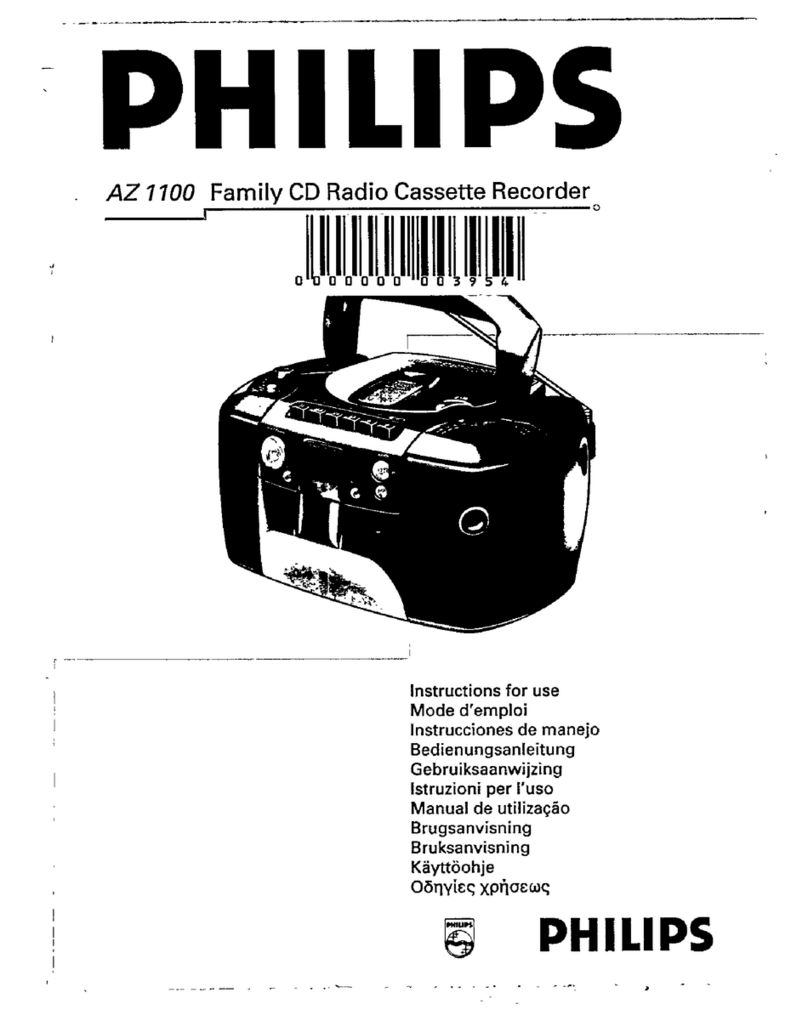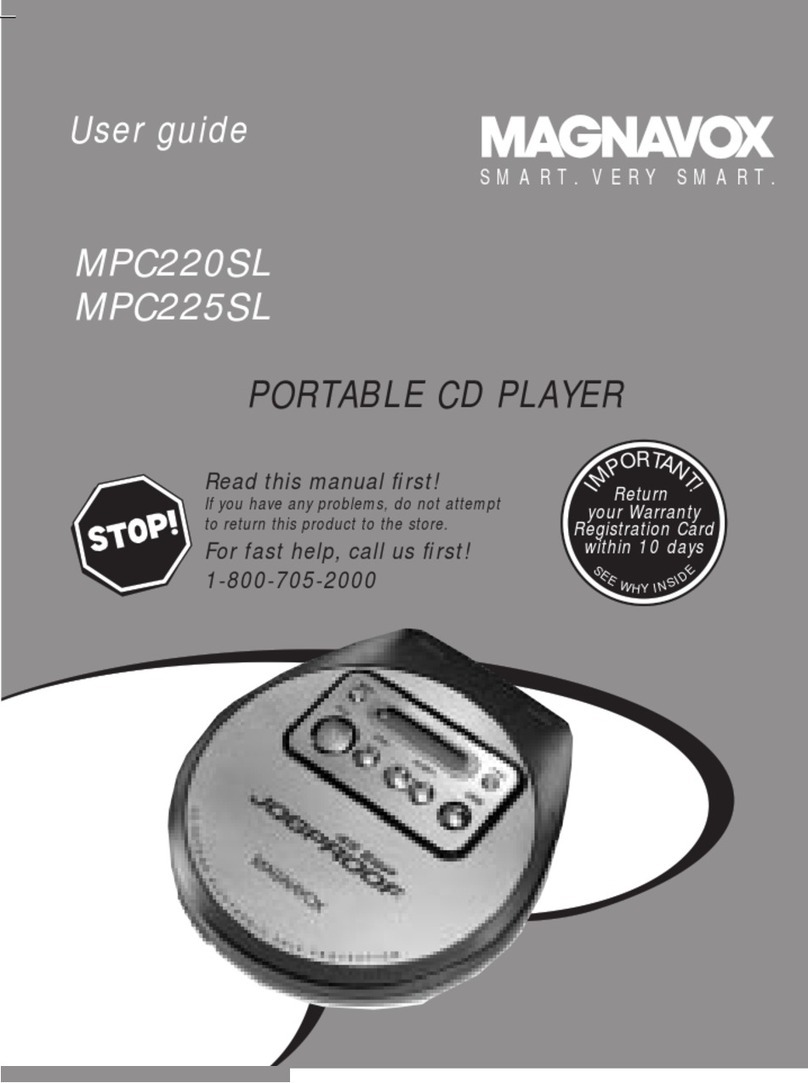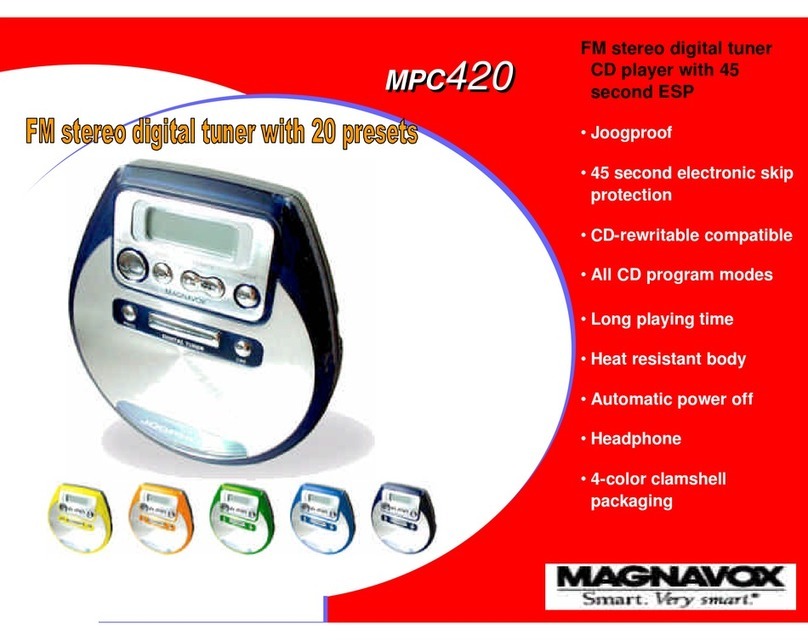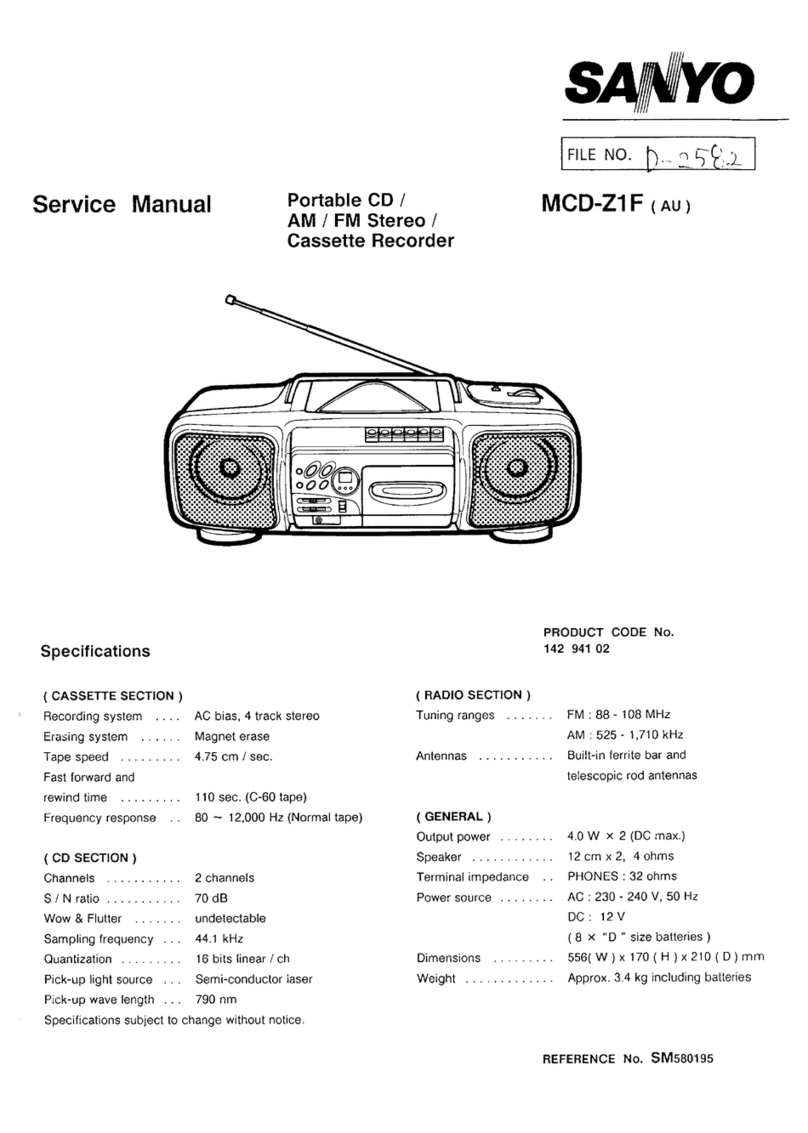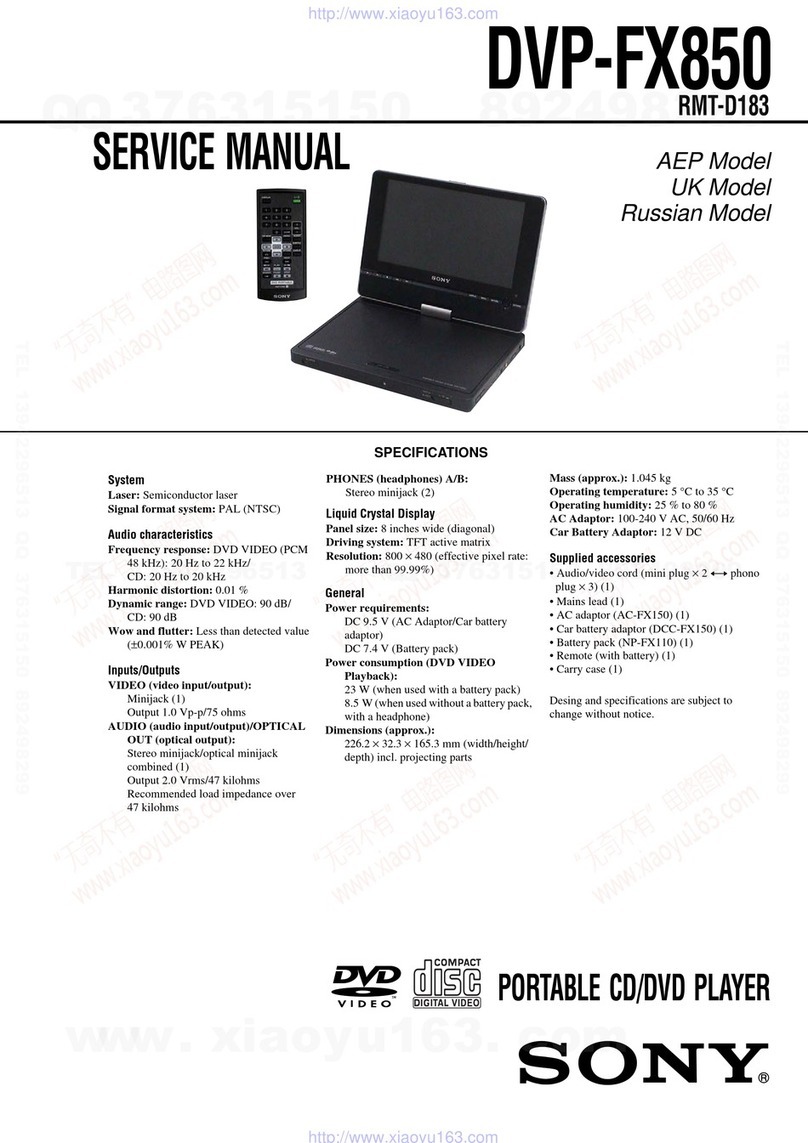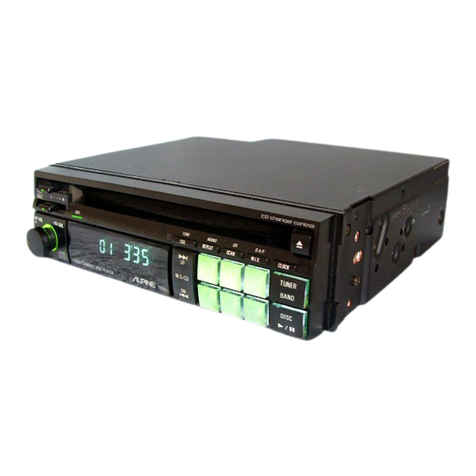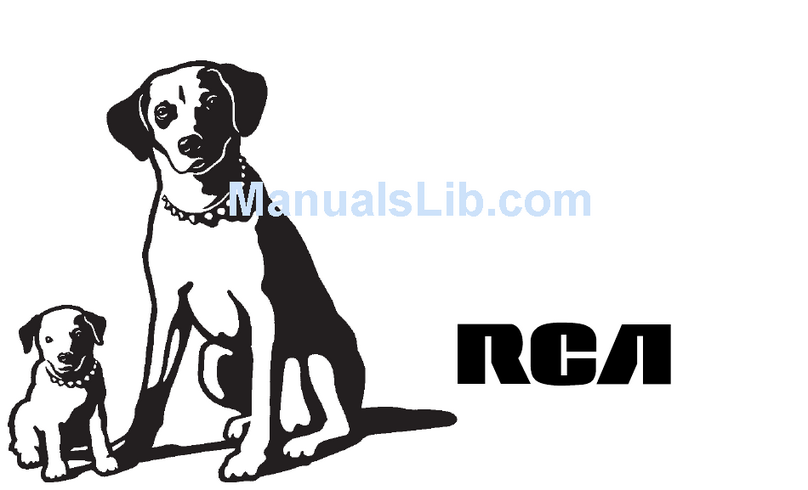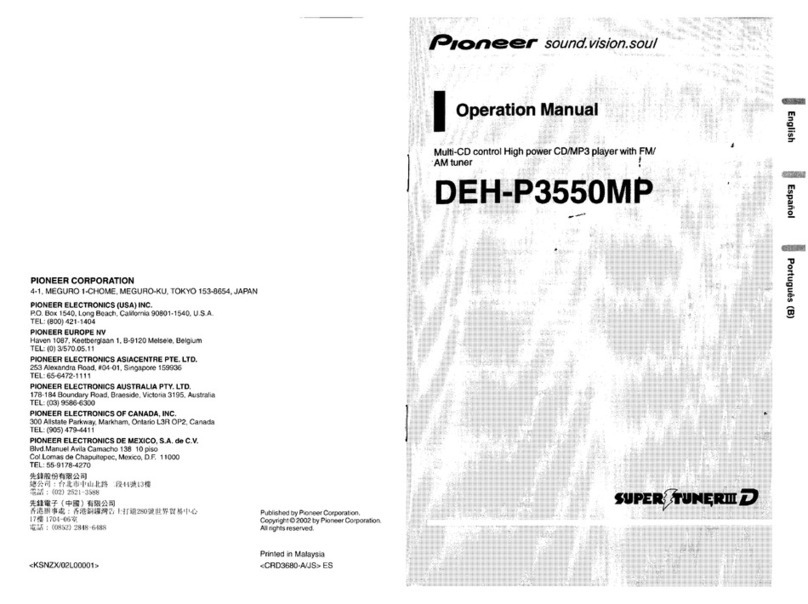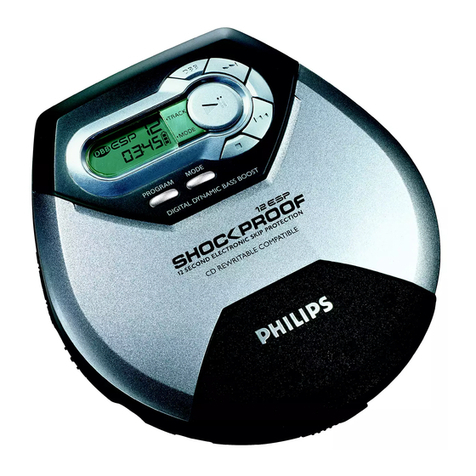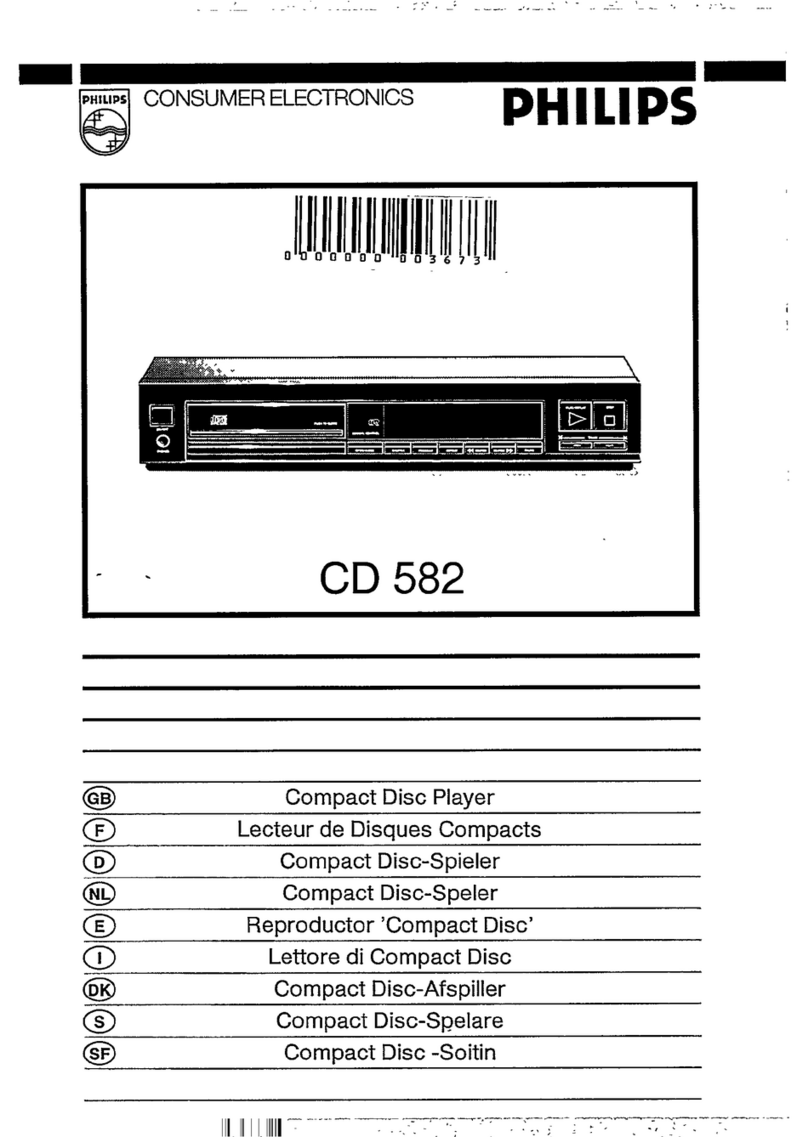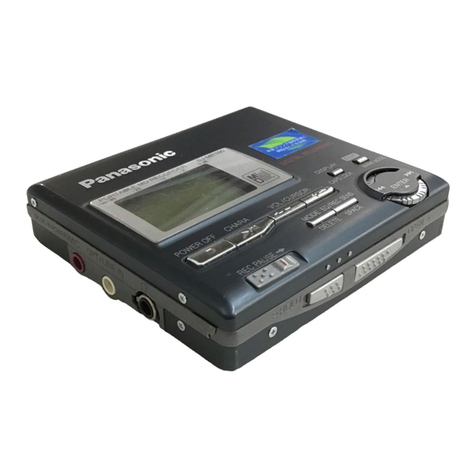
(
(
C
4. ELECTRICAL MEASUREMENTS
AND
ADJUSTMENTS
HINTS
Test
disc
It
is
important
to
treat
the
test
discs with great care.
The
disorders
on
the
discs (black spots, fingerprints, etc.) are
exclusive and unambiguously positioned. Damage
may
cause additional drop-outs, etc. rendering
the
intentional
errors
no
longerexclusive. In
that
case
it
will
no
longer
be possible
to
check
e.g.
the
good working
of
the
track
detectors.
Measurements
on
op-amps
In
the
electronic circuit op-amps have been used
frequently. Some
of
the
applications are amplifiers,
filters, inverters and buffers.
In
those
cases where in
one
way
or
the other, feedback
has been applied
the
voltage difference
at
the
differential
inputs converges
to
zero.
This
applies
to
both DC and
AC signals.
The
cause can
be
traced
to
the properties
of
an
ideal
op-amp
(Z1=
oo,
G =
oo,
20 =0).
If
one
input
of
an
op-amp
is
directly connected
to
ground
it
will be
virtually impossible
to
measure
at
the
inverting and
the
non-inverting inputs. In such cases
only
the
output
signal
will
be
measurable.
That
is
why
in
most
cases
the
AC voltages
at
the
inputs
will
not
be
given. The DC voltages
at
the
inputsare equal.
Stimulation with
"0"
and
"1"
During troubleshooting sometimes certain points should
be
connected
to
ground
or
supply voltage.
As
a result
certain circuit
can
be
brought
in a desired
state
thus
shortening
the
diagnosis time. In a number
of
cases
the
related points are outputs
of
op-amps. These outputs are
short-circuit-resistant, i.e. they can
be
brought
to
"O"
or
ground
without
problems.
The output
of
an
op-amp, however, should never be
connected directly
to
the
power
supply voltage.
Measurements on microprocessors
Inputs and outputs
of
microprocessors should never
be
connected directly
to
the
power
supply voltage.
The
inputs and outputs should only
be
brought
to
"O"
or
ground
if
this
is staed explicity.
Measurements with an oscilloscope
During measurements
with
an oscilloscope
it
is
recommended
to
measure with a 1:
10
test
probe, since a
1:10 probe has a considerably smaller input capacitance
than a 1
:1
probe.
Selection
of
ground potential
It
is
very
important
to
select a
ground
point
that
is
as
close
as
possible
to
the
test
point.
Conditions for injection
-Injection.of le\lels
0r
si_gnals
from an
extemal
source
should
never
take
place'if
ihe
related circuit has
no
supply
voltage.
T<he
,injected ,levels
or
signals·Shol!lld never
be
greater
than
the
supply
voltage
of
the
·r.elated circuit.
4-1
GENERAL CHECKPOINTS
In
the
detalled measuring method below a number
of
general conditioAs, required
for
a properly functioning
set, will
not
be
mentioned. Before
the
detailed measuring
method is started, these general points should
first
be
checked.
a. Ensure
that
disc and objective are clean (remove dust,
fingerprints, etc.)
and
work
with
undamaged discs.
b. Check
if
all supply voltages are present and
if
they
have
the
correct values.
c. Check
the
good
working
of
the
CD
mechanism by
means
of
the
servicing programme.
Indication
of
test
points
In the drawings
of
the
diagrams and
the
panel~e
test
points have been indicated
by
a number(e.g. '(.3/')
to
which the measuring method refers. In
the
measuring
method below,
the
symbol
(◊J
has been omitted
for
the
testpoints indicated.
Initiation
of
the
servicing programme
of
the
µP
-Service position "0"
Press
the
STOP/CM, NEXT and PAUSE keys. Keep
these three keys depressed while switching
on
the
mains voltage. This is
the
1
st
standby position.
The
number
of
the
internal ROM program
of
the
µP (e.g.
P101) appears
on
the display.
The
"TRACK" Led lights
up
as
well. In
this
position
the
radial arm
of
the COM
can be driven Inwards (with SEARCH >
>)
and
outwards
(with < < SEARCH)
with
minimum torque.
When one
of
these search keys
is
actuated, laser
control and focus control become active
as
well.
If
a
disc is
put
on
the
turntable,
the
working
of
the
focus
control can already
be
observed in this position. (It
the
arm moves outwards and inwards, you can hear the
optical pick-up unit
jump
across
the
tracks).
Attention:
After
one
of
these keys (SEARCH >
>,
<<
SEARCH) is pressed, the laser remains controlled
up
to
service position 3. Avoid, therefore, direct
exposure
to
the
laser beam in service positions
0,
1
and 2).
-Service position
"1"
From service position
"O"
the
player can
be
brought
into service position "1"
by
pressing
the
"NEXr
key.
The
indication "0001" appears
on
the
display. In
this
position
the
focus
start
procedure is repeated
over
and
over
again. The lasercontrol
is
active.
However,
this
start procedure does
not
release
the
focus,control. So
we
cannot
ascertain
that
the focal
point
is
found. This position
is
very suitable, however,
tor
measurements
of
the
focus circuit.
In service positions 1 and 2
the
arm
with
the
rafoc
unit can be moved inwards and
outwards
with the
SEARCH >> key and
the
< < SEARCH key
respectively. In this
way
the
free
movement
of
the
arm under
the
disc
can
be
checked.
CS
11
949 GB
